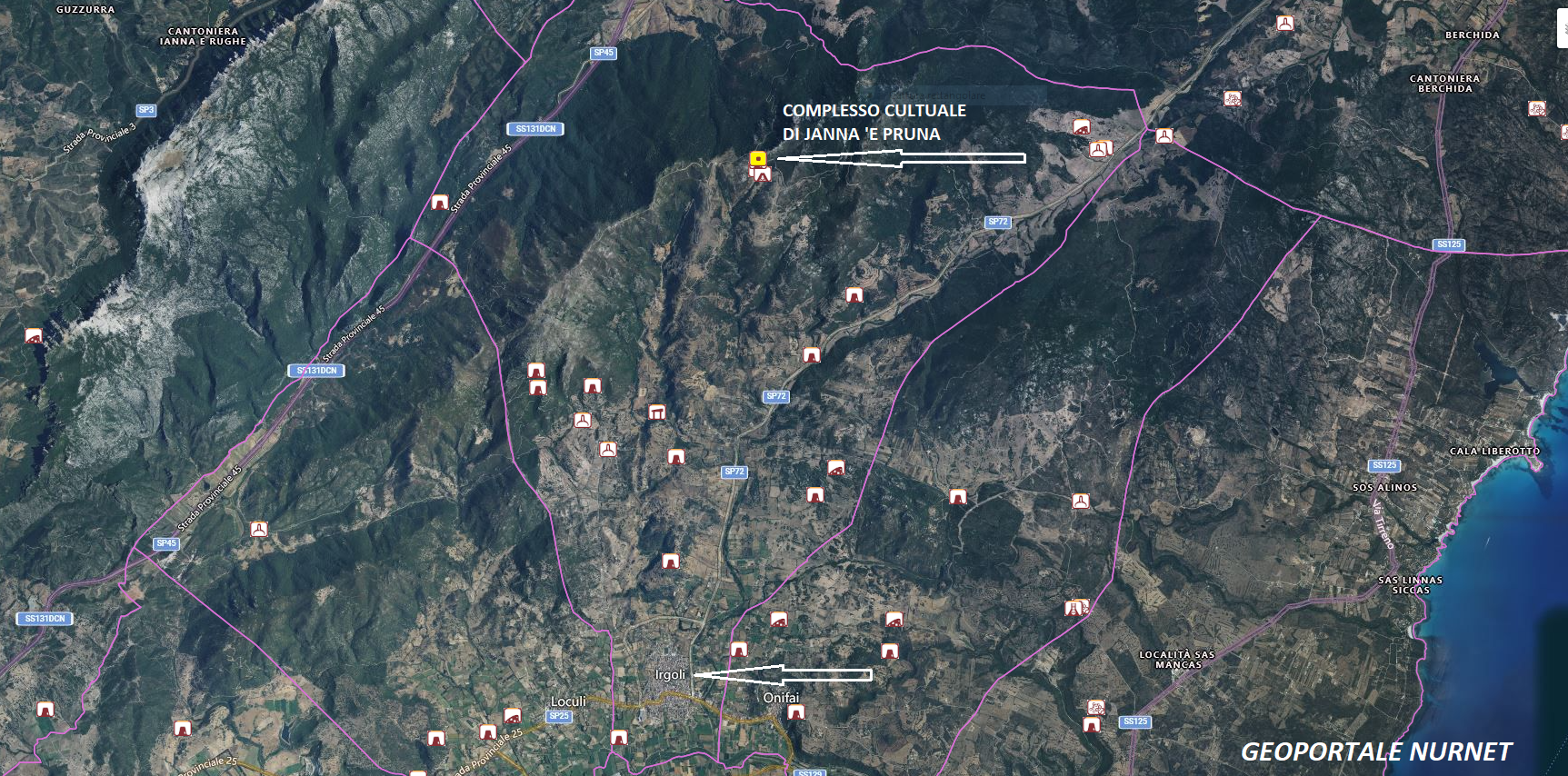The sacred complex of Janna ‘e Pruna, located in Irgoli, has been the subject of investigation by the Superintendency for Archaeological Heritage for the Provinces of Sassari and Nuoro. The sacred area, dominated to the east by the suggestive granite ridges of Monte Senes (approximately 862 m above sea level), was built during the Nuragic period at the Janna ‘e Pruna pass, currently part of the Irgoli-Norghio road and a historically frequented passage point (approximately 590 m above sea level) along a mountain route that connected the valley of Riu Siniscola with that of Cedrino, important routes of penetration from the coast into the interior of the island.
Excavations have brought to light a monumental temple enclosed within a wall enclosure (temenos) with a trapezoidal plan (occupied, in the front inner portion, by a courtyard with an elliptical plan), which in turn is included, along with another circular-plan structure, within a larger wall enclosure.
The main sacred building is articulated into two rooms: an atrium with a sub-rectangular plan (originally equipped with a bench, now only partially preserved) probably protected in ancient times by a gabled roof and a cell, accessible from the atrium itself, with a circular plan and presumably originally with a tholos (false dome) covering. The cell features in a central position the remains of a hearth characterized by various phases of use and, against the wall, a bench-massicciata. The material culture finds returned from the temple (ceramic material and fragments of bronze objects) allow dating the structure between the Final Bronze Age and the beginnings of the Early Iron Age (12th-11th century BC).
(Municipality of Irgoli)
The photos of the Nuragic sanctuary of Janna ‘e Pruna are by Maurizio Cossu and Marco Cocco.








